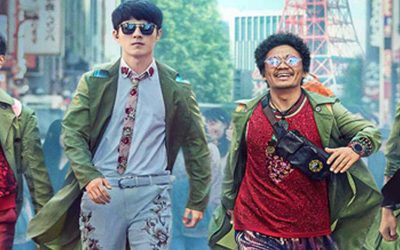The tragedy of the beauty Wang Zhaojun
Emperor Yuan (48–33 BCE) had a large harem and could not meet with all the palace women regularly. Therefore, he ordered painters to create portraits of them, and he would summon them for favors based on these portraits. Most of the palace women bribed the painters, offering as much as 100,000 coins, while even the smallest bribe was no less than 50,000 coins. However, Wang Qiang (Zhaojun) refused to bribe the painters and thus was never summoned.
Later, when the Xiongnu ruler came to pay tribute to the Han court and requested a beautiful woman to be his consort, the emperor referred to the portraits and selected Wang Zhaojun to be sent to him. On the day of her departure, she was summoned to appear before the emperor. Her beauty was unmatched among the palace women, and she excelled in conversation and carried herself with grace and elegance. The emperor regretted his decision, but her name had already been recorded, and the emperor valued his credibility with foreign nations, so he did not change the arrangement.
The emperor then thoroughly investigated the matter, and all the painters were executed in the marketplace. Their confiscated family assets amounted to enormous sums. Among the painters was Mao Yanshou from Du Ling, who was skilled at capturing the essence of a person’s appearance, whether they were beautiful or ugly, young or old, ensuring their true likeness. Chen Chang from An Ling, Liu Bai and Gong Kuan from Xin Feng were also skilled painters, specializing in depictions of animals such as oxen, horses, and birds in flight. However, their ability to depict human figures fell short of Mao Yanshou’s talent. Yang Wang from Xia Du was another talented painter, especially skilled in applying colors, as was Fan Yu. All were executed on the same day. After this incident, there were very few skilled painters left in the capital.
— Ge Hong, Miscellaneous Records of the Western Capital
Notes:
- The Han Dynasty (206 BCE–220 CE) is considered a golden age in Chinese history, marked by significant advancements in politics, economics, technology, and culture. Emperor Yuan’s reign falls within the Western Han period (206 BCE–9 CE), with the capital at Chang’an (modern Xi’an). Emperor Yuan was known for his strong support of Confucianism, appointing Confucian scholars to important government positions. He aimed to govern based on Confucian principles of virtue and social order. Its reign however was marked by factionalism among officials, leading to political infighting, and corruption within the government.
- The Xiongnu were a nomadic people who dominated the steppes north of China for centuries, particularly during the Han Dynasty. Their society was highly mobile, centered on pastoralism, with a reliance on horses and livestock. Organized into a hierarchical structure led by a Chanyu, their military prowess was formidable. Skilled horsemen and archers, they posed a constant threat to the sedentary agricultural Chinese. Raids into Han territories for resources and captives were frequent, leading to ongoing conflicts.
- The imperial harem of Han Dynasty China was a complex and hierarchical system designed to serve the emperor both personally and politically. It was a microcosm of the imperial court, filled with women of various ranks, each with specific duties and aspirations. At its core, the harem’s purpose was to provide the emperor with consorts to bear imperial heirs, ensuring the dynasty’s continuation. Women entered the harem through various means, including selections based on family background and beauty.
The harem was strictly organized, with ranks indicating a woman’s status and influence. The Empress held the highest position, followed by various concubines and attendants. Women’s lives within the harem were often governed by strict rules and rituals, with their fortunes tied to the emperor’s favor. Beyond their personal relationship with the emperor, women in the harem could wield significant political influence, particularly if they bore a son who became heir apparent. Factionalism and competition were common, as women sought to advance their own positions and those of their families. The harem was a world of both luxury and constraint, where women navigated complex social dynamics in pursuit of power and security.
- Wang Zhaojun, a figure of immense historical and cultural significance, stands as one of the «Four Beauties» of ancient China. Her story, woven with elements of political strategy and personal sacrifice, has resonated through centuries of Chinese art and literature. During the Western Han Dynasty, Wang Zhaojun entered the imperial harem of Emperor Yuan. However, due to her refusal to bribe the court painter, her portrait was rendered unflatteringly. Consequently, she remained overlooked by the emperor.
When the Xiongnu chieftain Huhanye sought a Han bride to solidify peace, Wang Zhaojun was chosen. It was only upon her departure that the emperor recognized her true beauty, a realization that filled him with regret. Her journey to the Xiongnu lands became a symbol of both sorrow and national interest. Legends depict her playing the pipa, its mournful melodies causing even birds to fall from the sky. Her marriage to Huhanye, and later, following Xiongnu custom, to his successor, aimed to foster stability between the Han and Xiongnu empires. Wang Zhaojun’s tale has been immortalized in poetry, plays, and art, evolving from a narrative of personal tragedy to one of patriotic heroism. She represents a complex interplay of beauty, politics, and cultural exchange, leaving an enduring mark on Chinese history.
Last posts
Travel to Guilin and enjoy China’s most beautiful landscape
Why must you travel to Guilin? Guilin is one of the most touristic cities and therefore one of the most visited. Most international tours include a stop in Guilin, at least the time to take the famous Li River cruise, and among domestic tourists, everyone is eager to...
Mao Dun – Rainbow, a beautiful metaphor about a woman and China
Mao Dun - Rainbow, a beautiful metaphor about a woman and China In short: This officially unfinished novel by the writer Mao Dun takes on a life of its own to become a model of the vital development of each person and at the same time of the social effervescence that...
Detective Chinatown III- The biggest blockbuster in China
Detective Chinatown III- The biggest blockbuster in China In Short: You can watch the movie, you will surely have a good time. You'll laugh at times, but you're not going to get much more out of it. And if you've seen the previous installments, you'll feel a bit...
How to prepare green tea to enjoy all its health benefits
How to prepare green tea to enjoy all its health benefits All people related to China have a vague idea that tea is good, our friends tell us so, sometimes an article appears in a newspaper or magazine, or the public relations of the tea houses or plantations that are...
Mao Dun’s Spring Silkworms-A must read
Mao Dun's Spring Silkworms-A must read In short: A set of stories of exacerbated realism by one of the finest pens of 20th century Chinese literature, which no one should miss in order to understand both the literature and the life and history of contemporary China....
Midnight by Mao Dun – a failed novel
Midnight by Mao Dun - a failed novel Before reading "Midnight", the masterpiece of Mao Dun, the most powerful Chinese writer in the twentieth century, reading the presentations of the Chinese edition, one wonders why such a great literary treasure is not better known...









